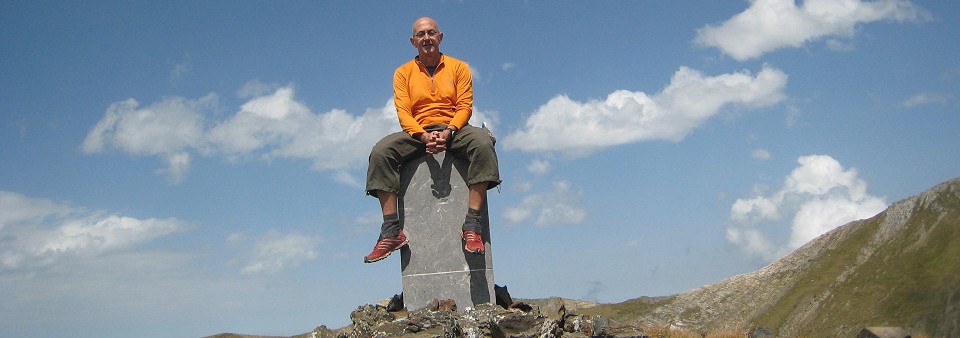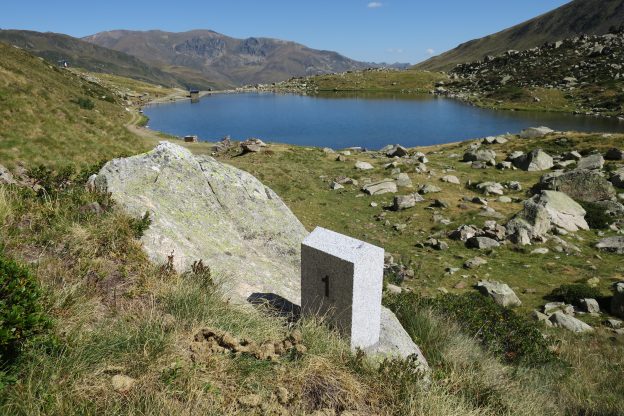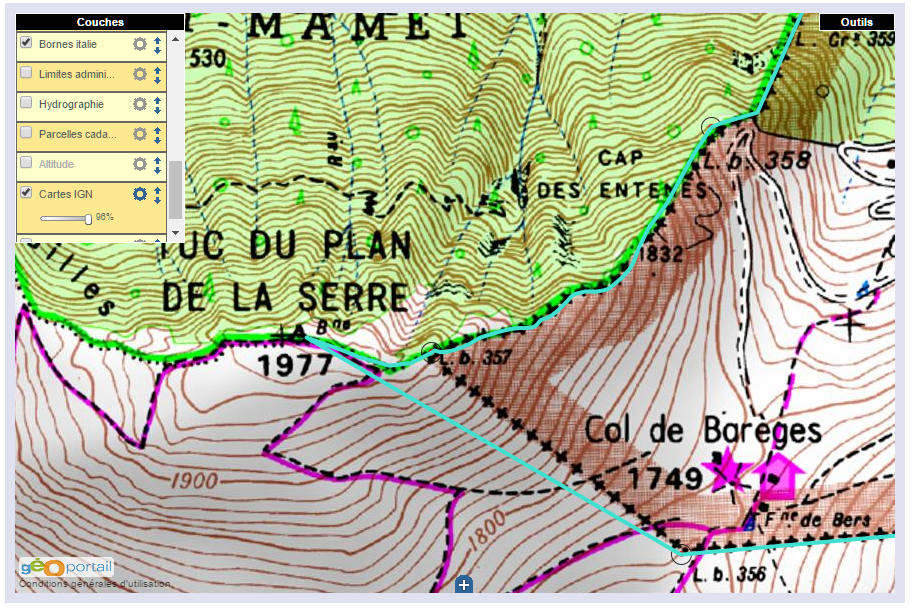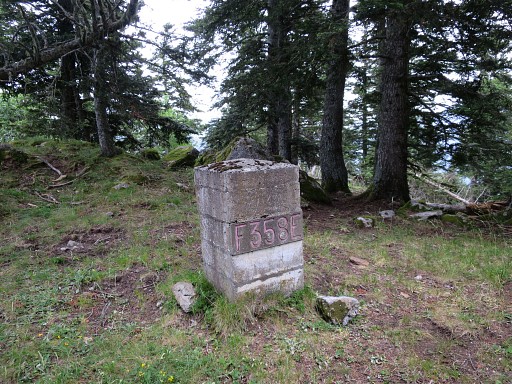Today I visited the recently installed bordermarkers between Andorra and France, see also the previous post. I checked the gps-readings as provided by the Andorra Cartography Department and they can be downloaded as a gpx or kml.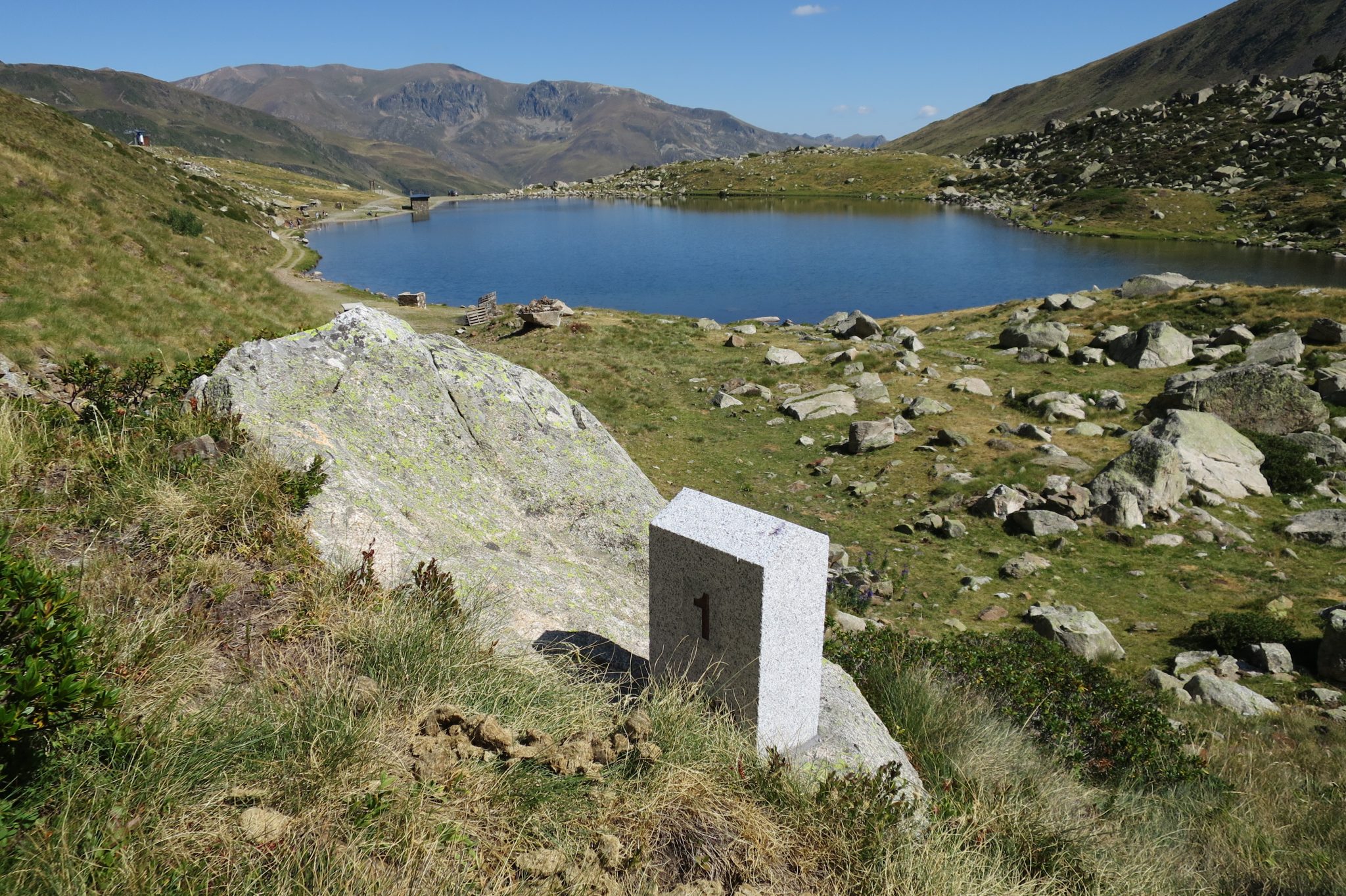
I was in a splendid company: with Corinne Gourgeonnet, Michel Molia and Jean-Paul Laborie. The last one is a member of the Pyrenean border commission and was highly involved in in the negotiations which led to the new borderline and new bordermarkers. The latest news is that the official inauguration is planned on september 6th.
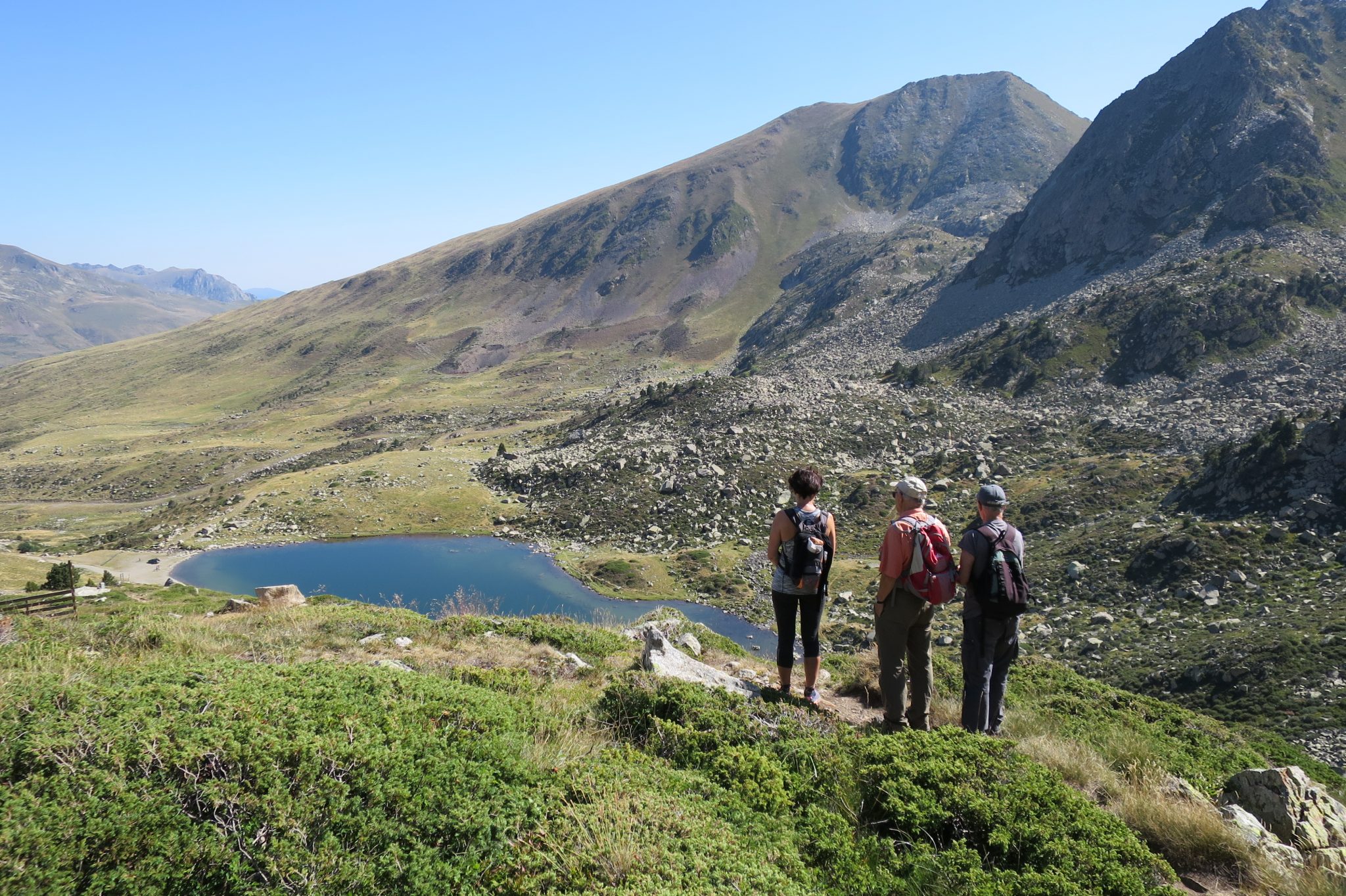
Jean-Paul guided us along the new bordermarkers, telling about the choices made, his work in general and his relationship with his predecessor Jean Sermet which he admires for his writings and the esteem he had in Spain. Michel had a discussion with him on the decision on the new borderline between bm408 and 409 which he (Jean-Paul) labeled as a political compromise with little chances of reversal (see this post for my opinion on this subject). By and large, we had a very pleasant outing, crowned by a picnic provided by Corinne.
